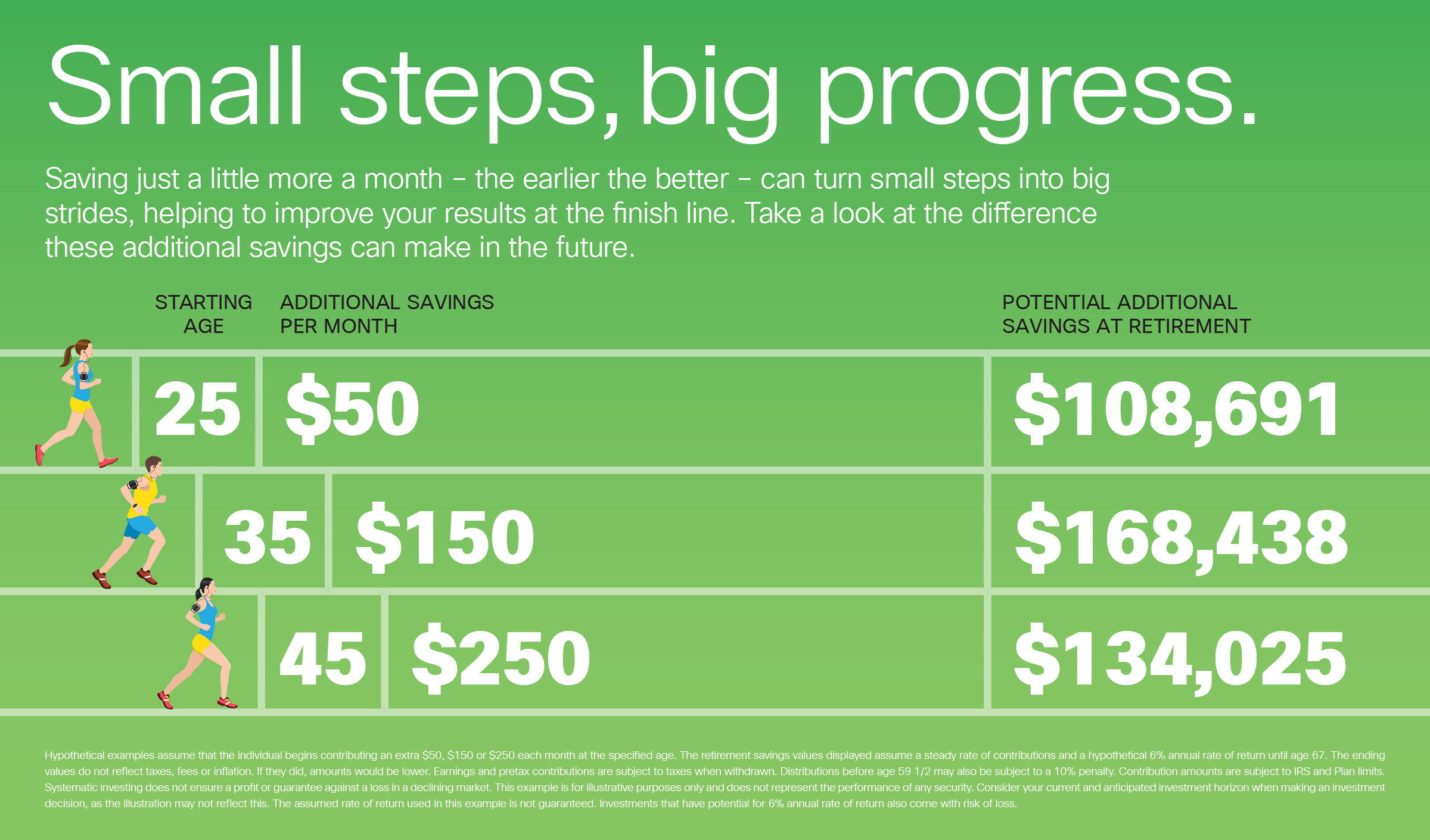It pays to make room in your budget now.
View the infographic
Ask any marathon runner how they got started, and chances are they didn’t sign up for a long-distance race right off the bat. They probably started out with smaller goals, like a 5K, or even a short walk or jog. The same rule applies to saving for your future. It’s okay to start small, as long as you start now.
Putting just 1% more of your pay into the Cisco 401(k) each year could make a difference. Thanks to Cisco’s 4.5% dollar-for-dollar match and the 401(k)’s tax advantages, a small step today can turn into a big stride tomorrow.
A Financial Wellbeing Pro can help you get your arms around your finances. Call People Support, Monday through Friday from 6 a.m. to 6 p.m. Pacific Time, at 866 282-3866 or 408 526-5999, Option 4. Ask for a Financial Wellbeing Pro or schedule an appointment to get started.

For every
$10,000
you earn annually,
A 1% change in your Cisco 401(k) contributions will reduce your bi-weekly paycheck by about $4, assuming a single filer.

If you contribute that additional 1% for 25 years, for every $10,000 you make, your account balance could increase by roughly
$5,650.

If you earn $100,000 annually, the total could be as much as
$56,500 more.
That’s not small change.
Alight Financial Wellbeing Pros and Fidelity Investments are independent entities and are not legally affiliated.
Hypothetical examples assume that the individual contributes $1,000 each year for 25 years, invested at a hypothetical 6% annual rate of return. The ending values do not reflect taxes, fees, or inflation. If they did, amounts would be lower. Earnings and pretax contributions are subject to taxes when withdrawn. Distributions before age 59½ may also be subject to a 10% penalty. Contribution amounts are subject to IRS and Plan limits. Systematic investing does not ensure a profit or guarantee against a loss in a declining market. This example is for illustrative purposes only and does not represent the performance of any security. Consider your current and anticipated investment horizon when making an investment decision, as the illustration may not reflect this. The assumed rate of return used in this example is not guaranteed. Investments that have potential for 6% annual rate of return also come with risk of loss.